Mexico: Southern
A short and exciting tour through Chiapas and Oaxaca. Starting in Mexico City for some tricky species like White-naped Swift, Black-backed Oriole, and Black-polled Yellowthroat, we then head towards the south coast. Hill forests contain Dwarf and White-throated Jays, the tiny Bumblebee Hummingbird, and Red Warbler, among many other Mexican endemics. After an enjoyable pelagic, we continue looking for highly range-restricted endemics like the stunning Rose-bellied Bunting and Nava's Wren, before finishing up with a couple of great bonuses like Unspotted Saw-whet Owl, Bearded Screech Owl, Pink-headed Warbler, and Giant Wren. All up, an easy tour with superb food and plenty of special birds!
Next Dates
20 February - 5 March 2026 (14 days)
Leaders:
Joshua Bergmark
Group Size Limit:
6
Single Room Supplement: $
500 USD
Deposit: $
750 USD
Price: $
6300 USD
5 March - 13 March 2026 (9 days)
Leaders:
Joshua Bergmark
Group Size Limit:
6
Single Room Supplement: $
TBD
Deposit: $
750 USD
Price: $
TBD
Yucatan Extension
30 March - 12 April 2027 (14 days)
Leaders:
Julien Mazenauer
Group Size Limit:
6
Single Room Supplement: $
500 USD
Deposit: $
750 USD
Price: $
6300 USD
12 April - 20 April 2027 (9 days)
Leaders:
Julien Mazenauer
Group Size Limit:
6
Single Room Supplement: $
TBD
Deposit: $
750 USD
Price: $
TBD
Yucatan Extension
All of our tours to Mexico are operated by René Valdés, one of the country’s most respected and well-connected bird guides. This means that we are always running with the most up-to-date information and have relevant permissions to access all birding sites. Despite some government advisories taking an overly cautious stance against travel to certain parts of Mexico, we are completely confident in the safety of all of our itineraries.
Accommodation:
All comfortable hotels.
Walking difficulty:
Mostly easy, but we might take a few longer walks for a couple of hours at birding pace.
Tour cost includes:
All accommodation, main meals, drinking water, internal flights (as stated in itinerary), overland transport, tips to local drivers and guides, travel permits, entrance fees, and guide fees.
Tour cost excludes:
Flights before and after the tour start/end, visa, travel insurance, tips to tour leaders, laundry, drinks, and other items of a personal nature.
Day 1: Arriving into Mexico City (MEX) by midday, the afternoon will be spent at a large marsh that is a great site for Black-polled Yellowthroat. We should also see Mexican Duck, while the tricky Aztec Rail is present but very hard to see at this site. Returning to Mexico City, it will be time for our first delicious Mexican dinner! Night in Mexico City.
Day 2: In the morning, we will be taken by 4WD up to the main breeding area for Sierra Madre Sparrow, an Endangered and very localised endemic. In this lovely protected valley (an alternative site to an area on the highway that has been unsafe to visit in recent years), we should easily find our target, along with Strickland’s Woodpecker, Mexican Violetear, Grey Silky-flycatcher, Buff-breasted Flycatcher, Mexican Chickadee, Yellow-eyed Junco, Striped Sparrow, and Rufous-capped Brushfinch. There is also a realistic chance here for wintering Colima Warbler. In the afternoon, we will look for Transvolcanic Jay before visiting a waterfall where hundreds of scarce White-naped Swift descend to roost - a real spectacle! Night in Mexico City.
Day 3: In the morning, we will be birding near our hotel in search of the attractive Black-backed Oriole and scrub-loving Hooded Yellowthroat. Afterwards, we drive south-east to Oaxaca for overnight.
Day 4: Full day of birding at Teotitlán del Valle and other localities nearby such as Yagul Archaeological Site, where we will be searching for endemic Bridled and Oaxaca Sparrows in the oak scrub valley. Other targets in the area include Grey-breasted Woodpecker, Beautiful and Dusky Hummingbirds, Boucard’s Wren, the tricky Ocellated Thrasher, West Mexican Chachalaca, Blue Mockingbird, and White-throated Towhee. Many other more widespread species are possible, including White-tailed Hawk, Golden Vireo, Black-vented Oriole, and Painted Redstart. Night in Oaxaca.
Day 5: We will spend all day birding in the humid pine-oak forest near La Cumbre, arguably the best place in the world to see the endemic Dwarf Jay. These small jays usually move around with flocks of noisy Grey-barred Wren and restricta Steller’s Jay, so we have very good chances of seeing them. Pre-dawn birding might produce Fulvous Owl. Other birds in the area include Mountain Pygmy Owl, Mountain Trogon, Chestnut-sided Shrikevireo, stunning Red, Olive, and Golden-browed Warblers, Russet Nightingale-thrush, Rufous-capped Brushfinch, and Collared Towhee. Night in Oaxaca.
Day 6: An early morning visit to one of the most impressive archaeological sites in all of the Americas: the Zapotec capital of Monte Albán, where we will search for Pileated Flycatcher, Slaty and Golden Vireos, and Rock and Canyon Wrens. Later, we will drive west of Oaxaca towards San José del Pacifico, in the Sierra Madre del Sur. We might arrive in time for some initial exploration of the area, searching for the rare White-throated Jay. Stunning and incredibly tiny Bumblebee Hummingbirds usually display in the garden of our accommodation, which also hosts Garnet-throated Hummingbird. Night in cabins in San José del Pacifico.
Day 7: We will spend all morning birding around San José del Pacifico, searching mostly for White-throated Jay. This is always a scarce species, but we have a reasonably good chance of success! Later, we will head downslope, stopping en route to search for Blue-capped Hummingbird, “Wagler’s” Northern Emerald Toucanet, and Red-headed Tanager. Night in Huatulco.
Day 8: In the morning, we will make a short but very enjoyable pelagic trip off Huatulco. Black-vented, Galapagos, Pink-footed, and Wedge-tailed Shearwaters, Tahiti Petrel, Black and Least Storm Petrels, Red-necked Phalarope, Nazca Booby, and Sabine’s Gull are all possible. Nowadays, the chances of seeing the Critically Endangered Townsend’s Shearwater are sadly slim, but we will be keeping an eye out. We will return by noon, and after lunch, we will be birding in the dry thorn forest and lowlands of Huatulco, staying until dark to look for Northern Potoo, Buff-collared Nightjar, and maybe some owls. Night in Huatulco.
Day 9: Early morning birding around Huatulco, searching for Citreoline Trogon, Turquoise-crowned Hummingbird, and Red-breasted Chat, among others. More widespread species such as Colima Pygmy Owl, Cinnamon Hummingbird, Golden-cheeked Woodpecker, Happy and Rufous-naped Wrens, Rufous-backed Thrush, Spot-breasted Oriole, and Blue Bunting are all possible. Afterwards, we will drive towards our next destination, stopping en route to search for the rare Cinnamon-tailed Sparrow. Late afternoon arrival in La Esmeralda for overnight.
Day 10: Birding La Esmeralda all morning, searching for the unique, very local, and highly charismatic Nava’s Wren, restricted to limestone outcrops within primary lowland forest in a tiny area of Mexico. Long-tailed Sabrewing is another target here, and many other more widespread species are possible as well. In the afternoon, we will drive to Arriaga, Chiapas, arriving with enough time to search for the stunning Rose-bellied Bunting - arguably one of the most beautiful species in Latin America and our prime target here. We should enjoy very good views of it, hopefully alongside the equally fantastic Orange-breasted Bunting! Green-fronted Hummingbird and Banded Wren are also possibilities here, and the rare Greater Swallow-tailed Swift is seen here somewhat regularly in the late afternoon. Night in Arriaga.
Day 11: In the early morning, we will drive to Puerto Arista area to search for the charismatic Giant Wren, along with White-bellied Chachalaca. In the afternoon, we will drive towards Tuxtla Gutierrez, making another stop en route for Rose-bellied Bunting still if needed. Night at Tuxtla Gutierrez.
Day 12: Birding the scenic gorge of Sumidero Canyon all morning, looking for Bar-winged Oriole, Belted Flycatcher, Canivet’s Emerald, Azure-crowned Hummingbird, Red-breasted Chat, and Blue-and-white Mockingbird. After lunch, we might visit El Ocote Biosphere Preserve, especially if we still need Nava’s Wren or Long-tailed Sabrewing. Later, we will drive towards the city of San Cristobal, where we will spend the night.
Day 13: Birding the mountain forest above San Cristobal all day, where the stunning Pink-headed Warbler will be our main target. Other possibilities include Wine-throated Hummingbird, Amethyst-throated Mountain-gem, Black-capped Swallow, Mountain and Black Thrushes, Rufous-collared Robin, Yellow-backed Oriole, Rufous-browed Wren, wintering Golden-cheeked Warbler, Cinnamon-bellied Flowerpiercer, and Black-throated and Uniform Jays. Owling in the evening will target two tricky specialties: Unspotted Saw-whet Owl and Bearded Screech Owl.
Day 14: We will likely be doing some predawn owling before a morning session around either San Cristobal or Sumidero Canyon, depending on remaining target species. Our tour ends with flight departures from Tuxtla Gutierrez Airport (TGZ) in the afternoon. Those continuing on the extension will fly to Merida.
YUCATAN EXTENSION
Day 1: Arrivals into Merida for overnight.
Day 2: Early morning visit to dry forest around Progreso. Main targets today will be Yucatan Gnatcatcher, Yucatan Wren, Mexican Sheartail, Clapper Rail, maybe Rufous-necked Wood Rail, and many other near endemic birds. In the afternoon we will drive to Ria Lagartos and have a nocturnal boat tour to find Yucatan Nightjar, and probably also the weird Boat-billed Heron. Overnight in Ria Lagartos.
Day 3: Morning birding in search of Yucatan Bobwhite, with stops for Yucatan Woodpecker and Yucatan Gnatcatcher as we start heading south towards Valladolid. We will spend the afternoon birding around Xocén for Wedge-tailed Sabrewing, Yucatan Flycatcher, and the interesting near-endemic Rose-throated Tanager. Various Central American species might include Turquoise-browed Motmot, Tawny-winged Woodcreeper, Northern Bentbill, and Mangrove Vireo. This is also a nice spot for wintering Hooded Warbler. At dusk, we will look for Yucatan Poorwill, along with Middle-American Screech Owl and Northern Potoo. Overnight in Valladolid.
Day 4: After a morning birding again in Xocén area we will drive towards Playa del Carmen for a ferry over to Cozumel Island. We'll already have time for birding this afternoon. Overnight on Cozumel.
Day 5: There are several hotspots to visit on this intriguing island, and we will try to visit most of them today. The three true endemics are Cozumel Emerald, Cozumel Vireo, and Cozumel Wren, while the beautiful Yucatan Amazon remains quite common on the island. A few other regional endemics are quite common here, such as Yucatan Vireo and Black Catbird. Caribbean specialties like Western Spindalis, Caribbean Elaenia, and White-crowned Pigeon can also be found, while Mangrove Cuckoo is common. Overnight on Cozumel.
Day 6: After our last morning birding on Cozumel we will take the ferry back to Playa del Carmen, and drive towards Felipe Carrillo Puerto. Overnight in Felipe Carrillo.
Day 7: Birding all morning along Vigia Chico Road. There is some excellent forest here, which holds specialties like Yucatan Jay, Orange Oriole and Grey-throated Chat. A few more widespread species like Stub-tailed Spadebill and Green-backed Sparrow can be searched for too. After driving further south, we will spend the afternoon birding around the Kohunlich Ruins. Overnight near Xpujil.
Day 8: A full day dedicated to birding around Calakmul Ruins. Of course we will be enthralled by many brilliantly unafraid Ocellated Turkey, along with Great Curassow and Crested Guan. Other species to look for include Lesson’s Motmot, "Middle American" White-bellied Wren, Ivory-billed Woodcreeper, and many more southern species which only just make it into Mexico in these forests. We will probably also see a few mammals like Yucatan Black Howler and Geoffroy’s Spider Monkey. In the evening we will visit Volcan de los Murcielagos (Volcano of the Bats) where millions of bats flying out for the night are hunted by Bat Falcon, a truly amazing natural wonder. Overnight near Xpujil.
Day 9: There are a few other hotspots around Xpujil where we expect to have second chances at several trickier species. Once it gets hot, we'll take the long drive back to Merida International Airport (MID), where the tour ends this evening in time for late flights back to Mexico City.
You may also be interested in our unique Mexico: North-East tour!

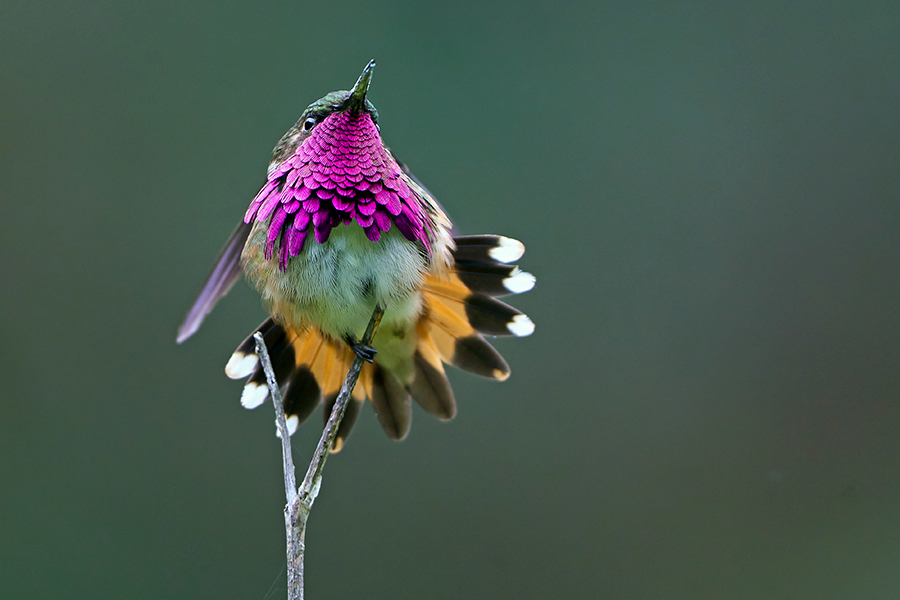

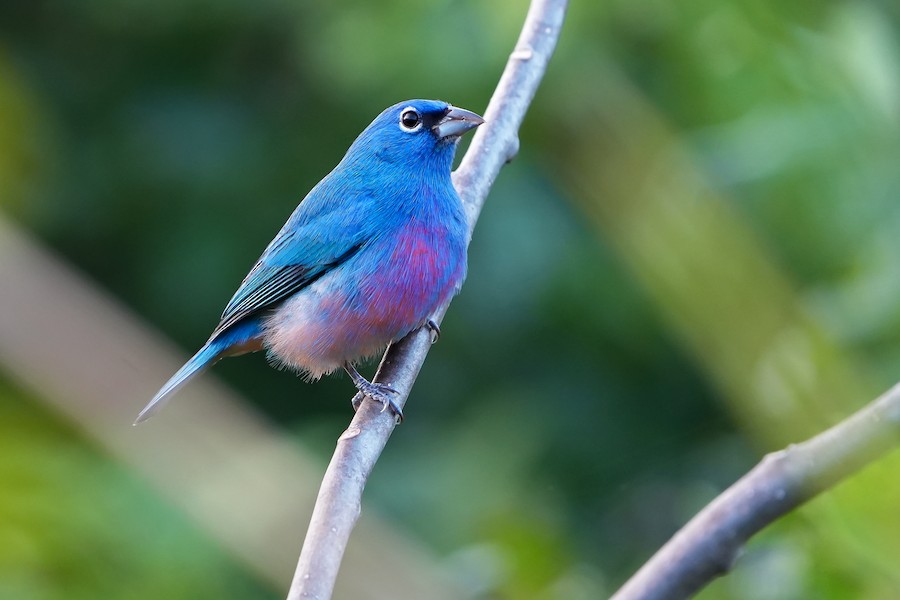

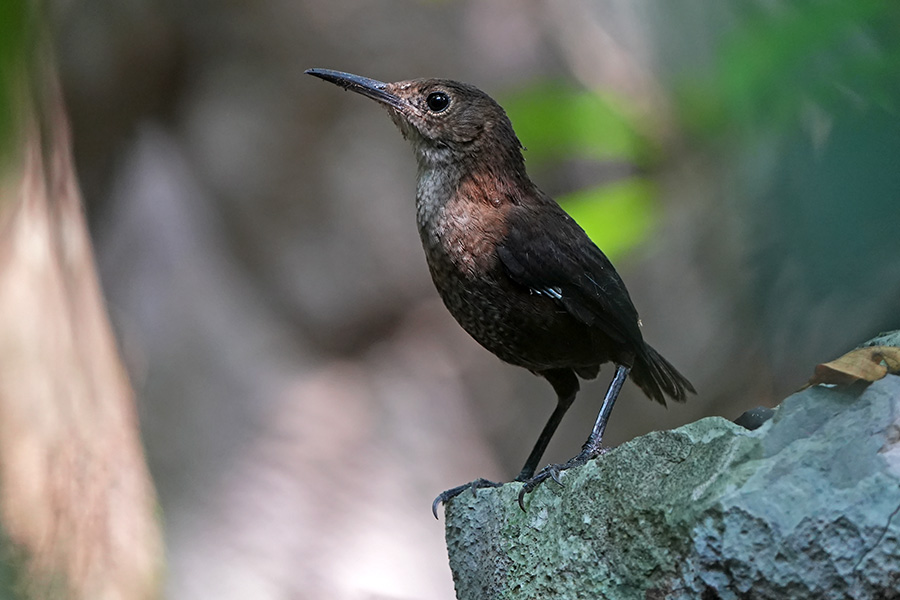



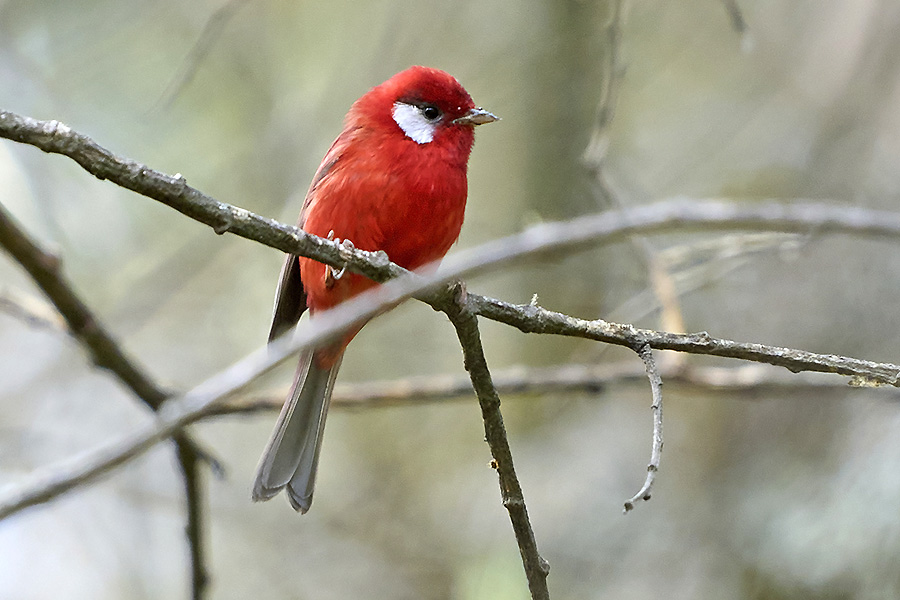

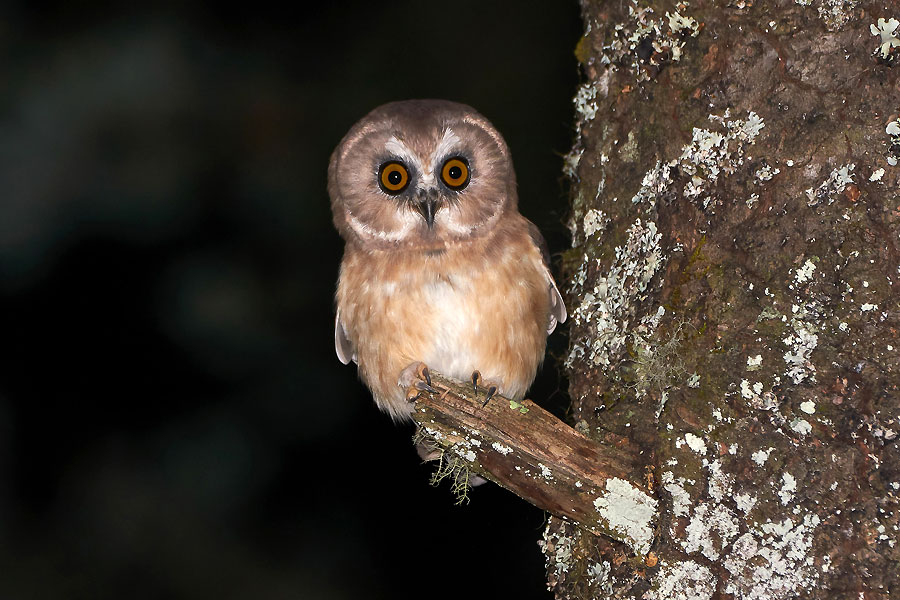

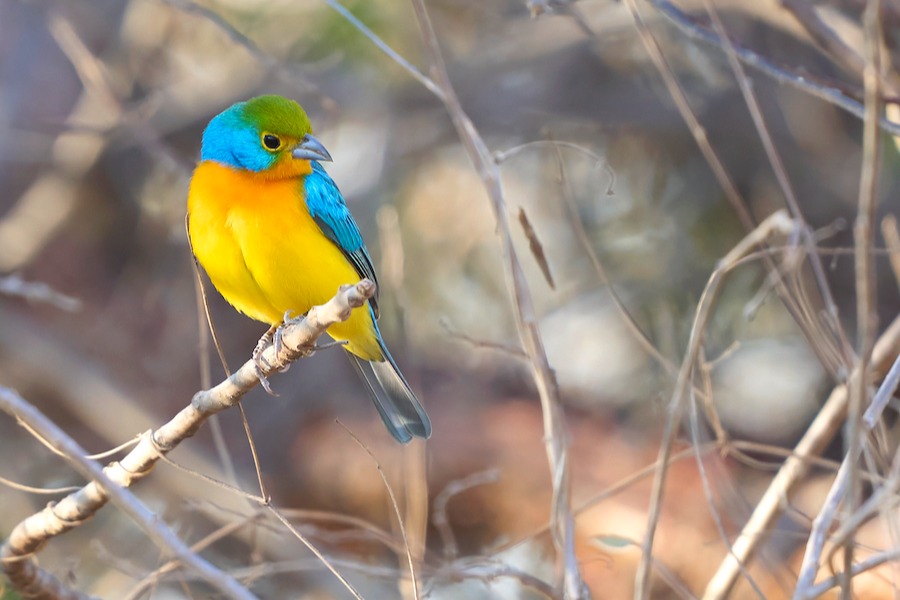

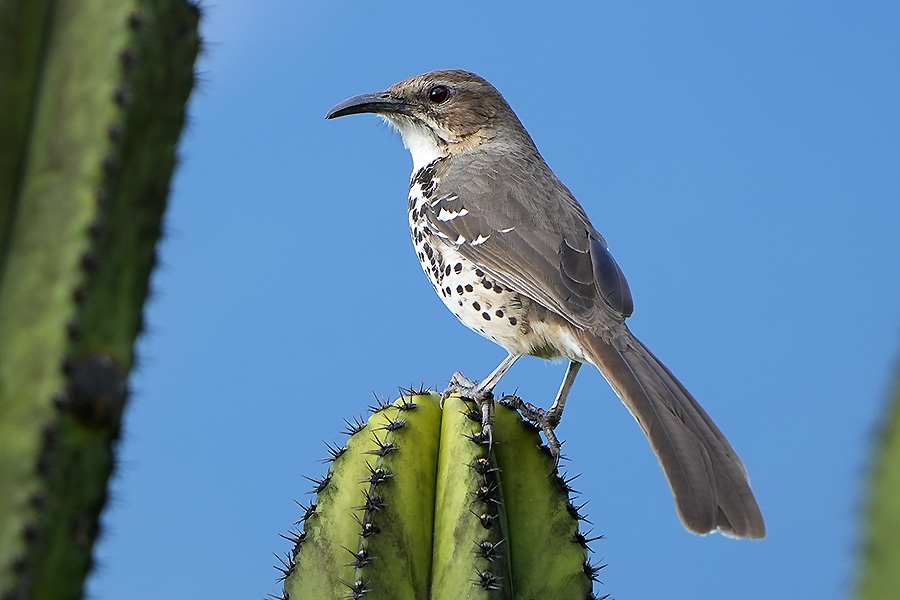

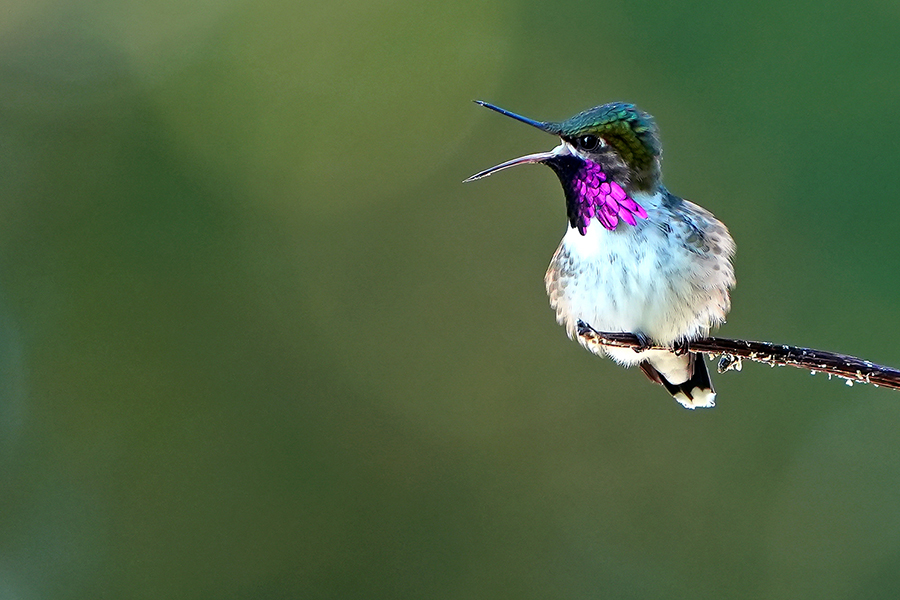



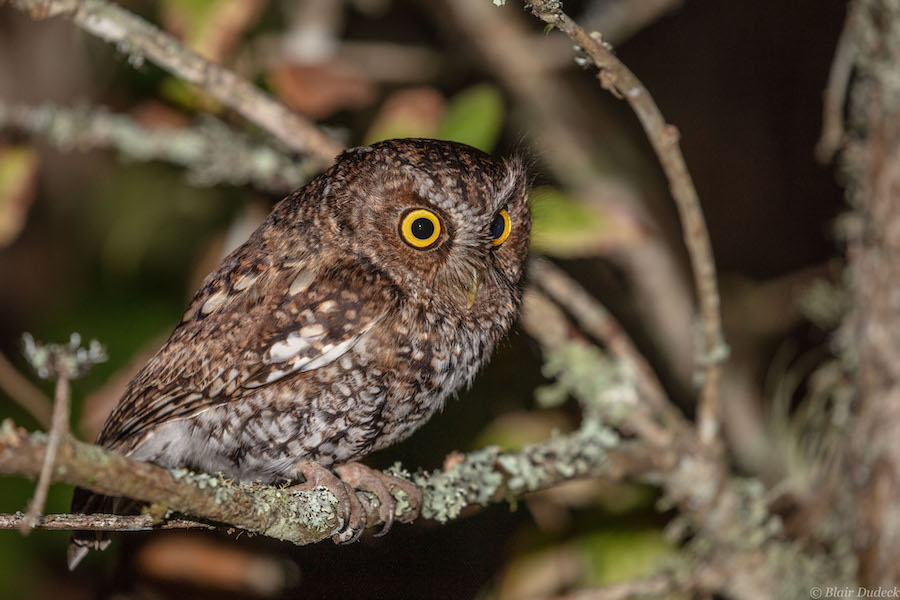

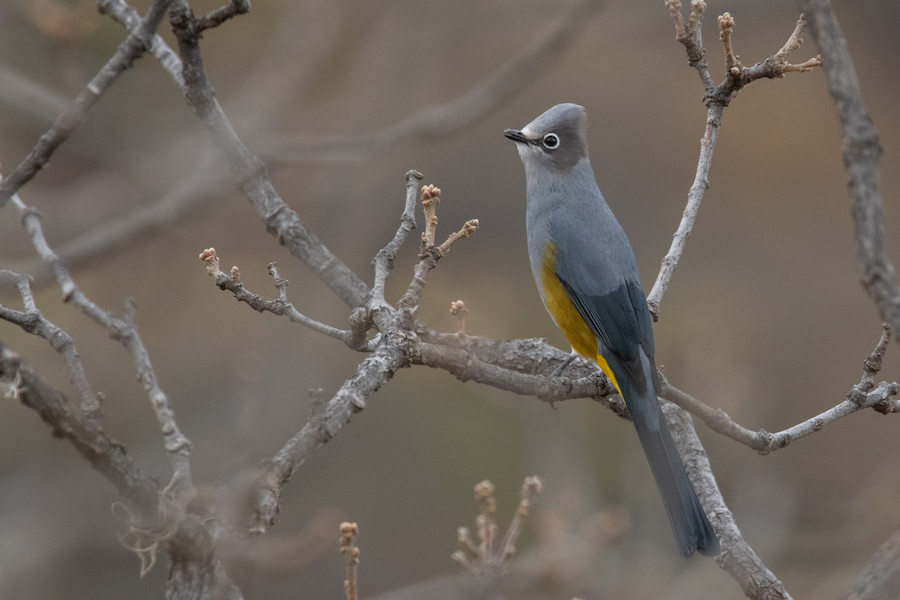

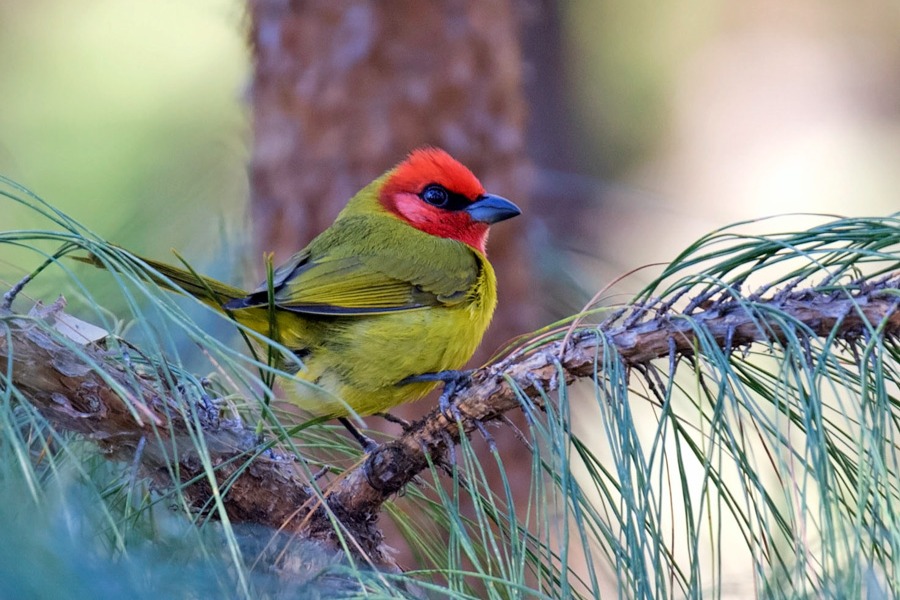



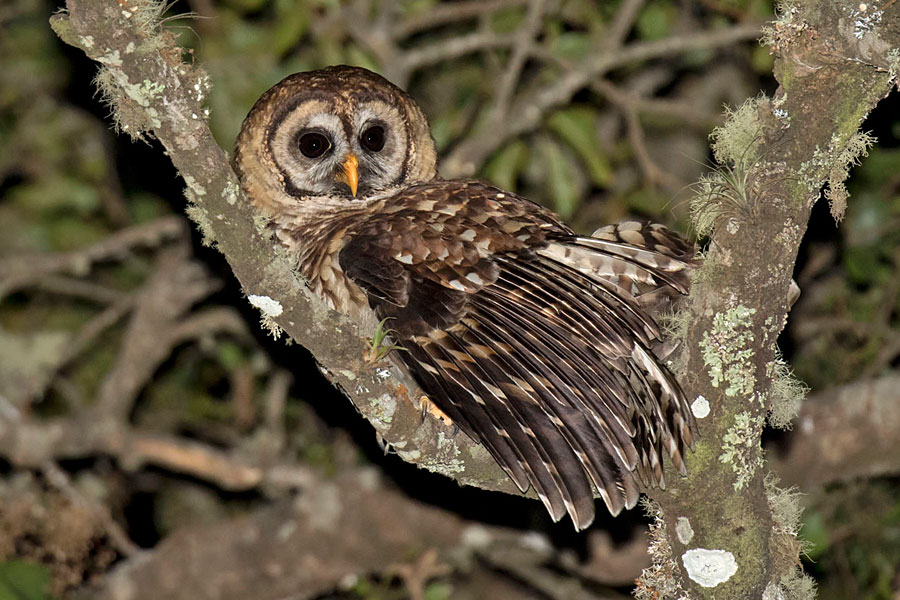

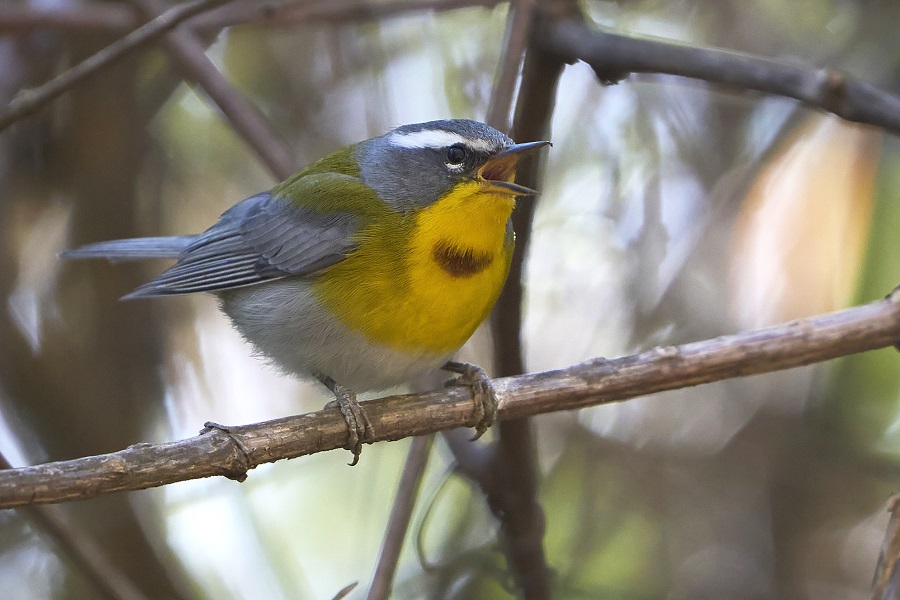



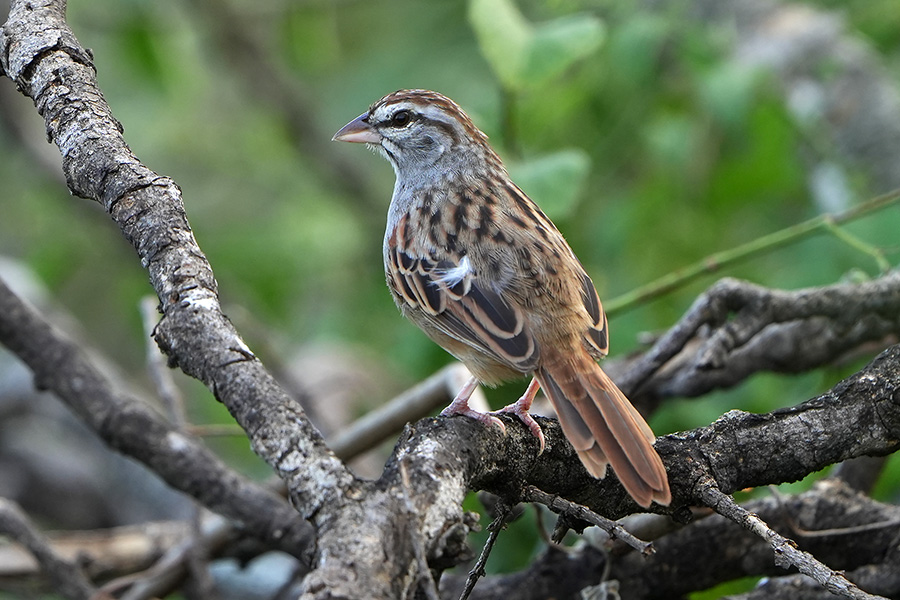

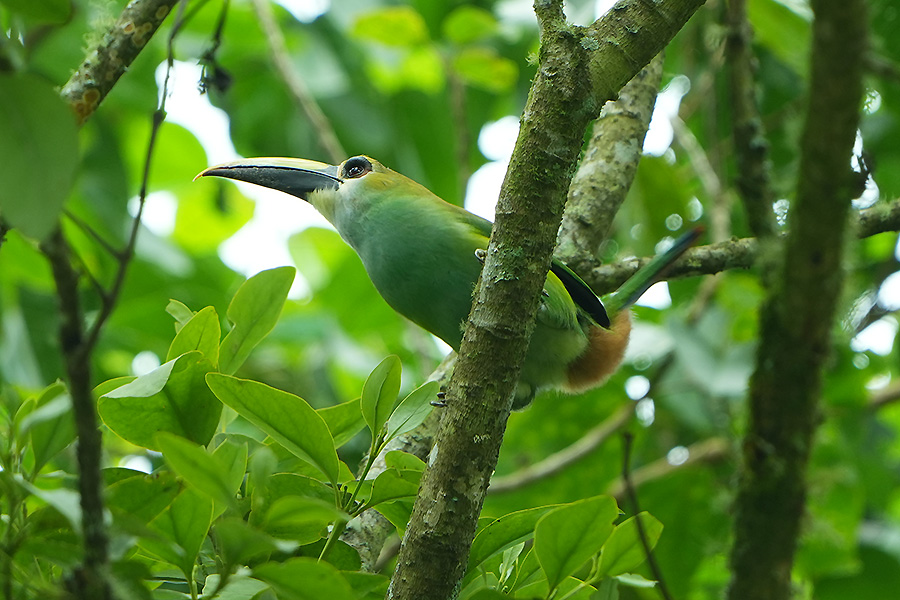

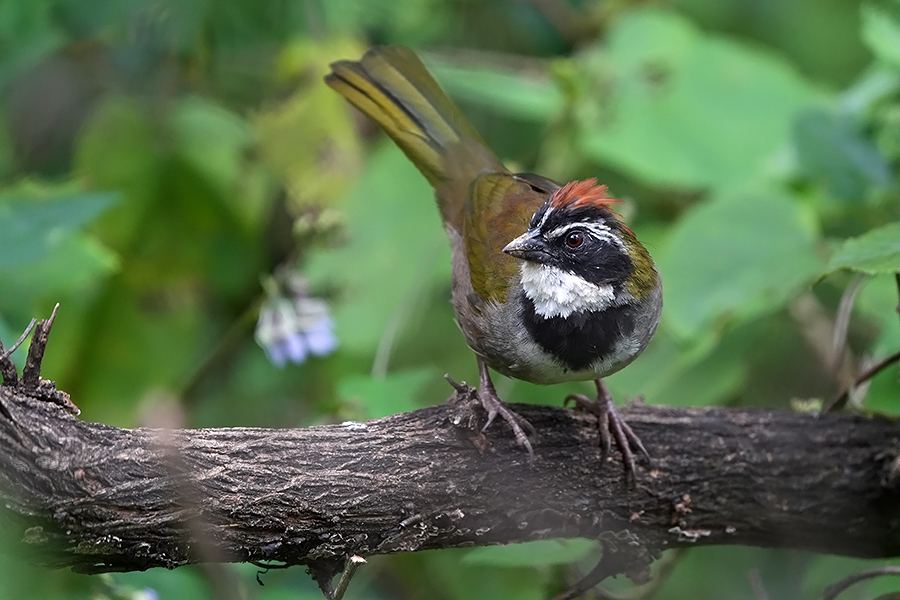
.jpeg)






